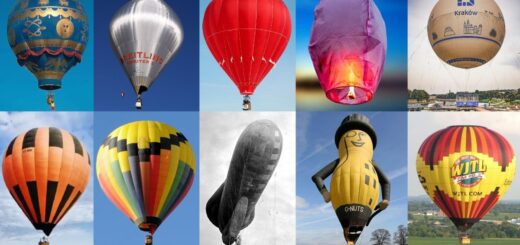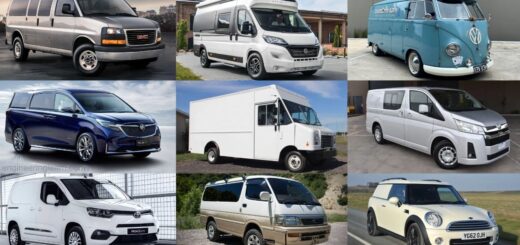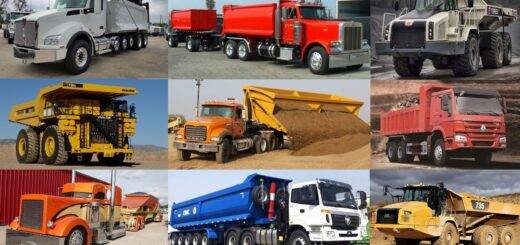48 Parts of Train and Their Functions [with Pictures & Names]
![48 Parts of Train and Their Functions [with Pictures & Names]](https://engineeringlearn.com/wp-content/uploads/2023/05/Parts-of-Train-1024x539.jpg)
Introduction
48 Parts of Train and Their Functions [with Pictures & Names]: – The rail provides a hard, smooth, and perpetual surface for the passage of heavy and weighty moving loads. Rails are made of high-carbon steel to endure wear and tear. A train is a progression or movement of vehicles that are connected to run along a rail line track and transport people or freight. Locomotive assists with pulling or pushing the train. These days, the train is a simple, quick, and affordable way of transportation. From the invention of the train till this day, different advancements happened to make it faster. ( Types of Trains )
Today we can see high-speed trains, which transport individuals and cargo starting from one spot and then onto the next. To make it more efficient and productive different parts of a train are manufactured and assembled precisely. Trains are transport systems that have a progression of connected vehicles that run along a track.
Parts of Train
Below we will discuss about different parts of a train: –
- Diesel Engine
- Turbocharger
- Alternator
- Helper Alternator
- Fuel Tank
- Truck/Bogie
- Couplers
- Air Compressor
- Air Reservoirs
- Wheel
- Brakes
- Water Tank
- Forced Air System
- Fluid Coupling
- Sand Box
- Gear Box
- Drive Shaft
- Drawbar
- Rectifiers/Inverters
- Batteries
- Air Intake
- Radiator
- Ventilators
- Motor Blower
- Cab
- Control Station
- Pilot
- Locomotive
- Roof
- Funnel
- Side Footboard
- Coach
- Carriage
- Box or Freight Car
- Wagon
- Compartment
- Communication Cord
- Corridor
- Couchette
- Luggage Rack
- Strap
- Windows
- Headlights
- Horn
- Buffet
- Dining
- Dining Car
- Toilet and Toilet Tank
1. Diesel Engine: ( Parts of Train )
The function and capability of the diesel engine is to generate power from the ignition of the diesel in the combustion chamber to drive the train. The diesel engine is huge and has different systems and arrangements to increment efficiency. For the most part, it is available in the front carriage of the train.
2. Turbocharger: ( Parts of Train )
A turbocharger is a forced induction device powered by the progression of exhaust gases. It utilizes this energy to compress the induction gas, forcing more air into the engine to produce more power for a given displacement.
3. Alternator: ( Parts of Train )
The function and capability of the alternator is to generate AC power to drive the traction motors of the train. Input rotational power comes to the alternator through the engine drive shaft to foster the electricity.
4. Helper Alternator: ( Parts of Train )
Its function and capability are to generate electricity which we can use in the train to operate fans, lights, and charging ports.
5. Fuel Tank: ( Parts of Train )
It is a metallic tank for storing and supplying fuel to the engine for the generation of power. The tank comprises 1,000 gallons of diesel in the tank. Having more diesel for the long journey is quite essential.
6. Truck/Bogie: ( Parts of Train )
Bogie is a chassis or system that carries a wheel-set attached or joined to a vehicle modular sub-assembly of wheels. The range of bogies is from one axle to multiple axles.
Two-axle bogies are the most renowned because of their adequate performance in the curve tracks and their ability to deal with heavy loads. Its alternate name is the truck.
7. Couplers: ( Parts of Train )
A coupler is a mechanism by and large positioned at each end of a railway vehicle that connects or interfaces them to form a train. Designing these kinds of coupling is a complicated as well as challenging job.
8. Air Compressor: ( Parts of Train )
The Air compressor or blower compresses the air and supplies them to the brakes. It drives the power from the alternator to work or operate. A reciprocating compressor is the most ideal decision for locomotive applications.
9. Air Reservoirs: ( Parts of Train )
An air reservoir is an exceptionally thick metal storage device to sustain the high pressure and temperature of the air after compression. It is important to have a compressed air storage system to operate the air brakes. Without it, we can’t utilize the brakes on the locomotive or trains.
10. Wheel: ( Parts of Train )
The round, metallic, and tapered shape that drives the train on the track is called wheels.
11. Brakes: ( Parts of Train )
As we probably are aware, the railway is a strong and large steel structure that is crucial to stop at the stations. Be that as it may, with the conventional braking mechanism, it is not possible. Thus an air braking mechanism is the most ideal choice. It involves compressed air as the operating medium. A braking mechanism is accessible on the many train wheels, and air hoses supply the compressed air to each wheel for effective operation.
12. Water Tank: ( Parts of Train )
The cold water is stored in the water tank and further supplies them in the washrooms of the train. Before the train departs from its first station it is completely filled.
13. Forced Air System: ( Parts of Train )
The air conditioner is important to maintain the temperature in the various compartments like 2-tier and 3-tier. It comprises a compressor, condenser, expansion valve, evaporator, and so on. AC is accessible in fixed carriages only.
14. Fluid Coupling: ( Parts of Train )
The role of Fluid coupling is that it transmits the power from the engine to the drive shaft. It comprises of a stator, rotor, and casing.
15. Sand Box: ( Parts of Train )
It is a box or crate to contain sand, which can provide great adhesion to the train in bad rail conditions.
16. Gear Box: ( Parts of Train )
The gearbox function and capability is the multiply the torque and speed per the necessity. The power generated by the motor is high. It is important to control it and divert the train wheel according to the requirement. Thus, the gearbox assists with controlling the speed through the different gear arrangements.
17. Drive Shaft: ( Parts of Train )
It basically transfers the power from the engine to the compressor, alternator, and radiator fans for their work.
18. Drawbar: ( Parts of Train )
It is for attaching or connecting with two passenger cars.
19. Rectifiers/Inverters: ( Parts of Train )
Inverters convert the electricity from AC to DC or the other way around.
20. Batteries: ( Parts of Train )
The electricity is stored in chemical form to operate or start the diesel engine. It gets automatically charged when the train runs on the track.
21. Air Intake: ( Parts of Train )
The purpose of Air intake is to pass around the air to radiator tubes so that it will cool the coolant. At the point when air enters the air intake, it passes through the different filters to the radiator tubes.
22. Radiator: ( Parts of Train )
The radiator’s capability and function is to cool the cooling fluid going through the radiator tubes. While cooling fluid passes to the engine sides, it assimilates the heat and which becomes hot. To decrease the temperature, it again passes to the radiator curls. This cycle reiterates every time.
23. Ventilators: ( Parts of Train )
Ventilators are basically the fans around the traction motors to cool them.
24. Motor Blower: ( Parts of Train )
As the name suggests, it blows air over the foothold engines to keep them cool. This motor blower system and construction are more complicated for the new locomotives.
25. Cab: ( Parts of Train )
The cabin from where the train operator controls and operates the train is known as the cab. We get a wide range of controlling devices in a cabin to manage all operations on the train.
26. Control Station: ( Parts of Train )
The control station is the dashboard where we can see every type of controlling levers or switches as well as buttons to control the train.
27. Pilot: ( Parts of Train )
A pilot is available at the front of the train to eliminate the obstacles from the track while the train is running.
28. Locomotive: ( Parts of Train )
The locomotive is the front part of the train that has an engine to produce energy for running the train on the track.
29. Roof: ( Parts of Train )
It is the highest point of the carriage to shield the travelers from bad atmospheric conditions, downpours, sun, and so on.
30. Funnel: ( Parts of Train )
The funnel is a tube on the top of the engine segment to pass the smoke into the air.
31. Side Footboard: ( Parts of Train )
These are the stepping stools on the train to move to the top. During maintenance, climbing on the train is allowed.
32. Coach: ( Parts of Train )
Coach is the overall classification like general, seater, sleeper, 2-level AC, or 3-level AC carriages of the train. One coach forms different carriages.
33. Carriage: ( Parts of Train )
A carriage is one of the different segments of a train that carries travelers. It comprises seats, windows, and doors on the two sides to enter.
34. Box or Freight Car: ( Parts of Train )
Box cars are big rectangular shape box which accompany sliding doors on the sides. Its essential use is to carry large loads of products like grain, paper, flour, drinks, and different goods and safeguard them from unforgiving climate.
Insulated boxers are insulated from all sides to maintain the inside temperature. These are specially designed for carrying and storing the products like vegetables, fresh food, frozen food varieties, fish, poultry, meat, dairy food varieties, and drinks.
35. Wagon: ( Parts of Train )
Large open containers where you want to store or carry goods are called wagons.
36. Compartment: ( Parts of Train )
Compartments are the segments inside the carriage. Every compartment is made of the top, middle, and down seats relying upon the type of train.
37. Communication Cord: ( Parts of Train )
The communication cord is an emergency handle accessible in each train compartment to use in any emergency situations and conditions. It’s important to pull this cord to deliver the signal to the train operator about the emergency.
38. Corridor: ( Parts of Train )
It is the passage or section to walk inside the coach.
39. Couchette: ( Parts of Train )
If you want to rest or sleep, couchette is there for you It is a type of bed which is positioned on the wall of the train so that you can sleep properly.
40. Luggage Rack: ( Parts of Train )
A shelf in the carriage where bags are securely stored is known as luggage racks.
41. Strap: ( Parts of Train )
The objects hanging from the train ceiling for holding through the hand are known as straps.
42. Windows: ( Parts of Train )
Windows are for providing ventilation to travelers. We can open them at whatever point we require, and these are typically sliding windows that slide up and down.
43. Headlights: ( Parts of Train )
These are at the front of the train to enlighten the track and get appropriate visibility while driving.
44. Horn: ( Parts of Train )
It cautions or gives an alert to individuals who are standing in the station, road crossing, and on track. It works for the safety of individuals.
45. Buffet: ( Parts of Train )
It is part of a train where you can purchase food and beverages.
46. Dining: ( Parts of Train )
If you want to eat some food items there is a space for eating which is known as dining.
47. Dining Car: ( Parts of Train )
A separate carriage contains all the food, kitchen, and other food-related items. We can also say it is the restaurant on a train.
48. Toilet and Toilet Tank: ( Parts of Train )
It is for collecting human waste while traveling via train. In the middle between the two carriages, a toilet is available. Human waste is assembled in the tank, and at the station, it is taken out for the following excursion.
Conclusion
Trains are a fundamental part of the transport system in numerous ways. They are in many cases the best mass-transit system and furthermore help in trade. The train was initially controlled by steam, yet today, diesel or electric trains power most trains. Trains with large quantities of rail cars frequently require more than one locomotive. The strength, durability, and lateral guidance to the track are provided by the rails. Nowadays, a train is a mix of locomotives and cars.
Trains are turning out to be more minimal in design yet with more complex insides. The size of trains means it is important to their security. While it could be more productive to transport goods in one long, enormously loaded train, the increments in stopping distance can make such endeavors risks for both the train crew and any vehicles they might experience along the way.
Image Source: – artstation













